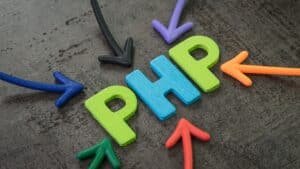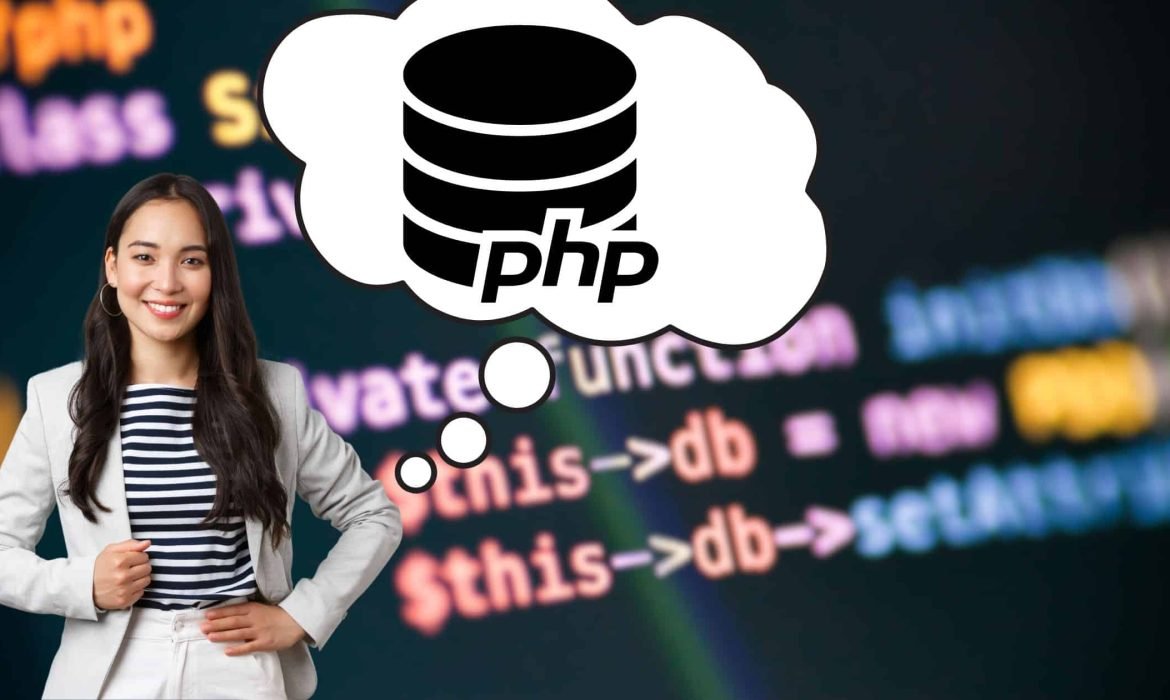Deploying CakePHP with Docker: A Step-by-Step Guide for 2025
Are you ready to streamline your Cake PHP application deployment? If so, Docker is the perfect solution. Docker is a virtual box for your applications. Docker makes deploying your Cake PHP application simple and easy to follow. It ensures that your application runs the same way on every system, removing issues caused by different setups. You can also skip the usual troubles of manual deployment with Docker’s streamlined process.
This guide will show you how to deploy a Cake PHP application using Docker in a way that is easy to understand. Whether you are new to Docker or have some experience, the steps are designed to help you succeed.
Let us get started and simplify your deployment process.
Why Use Docker for Cake PHP?
Docker is a powerful tool that makes deploying applications easier. It allows you to bundle your Cake PHP application with all its required dependencies into a single container. This container can run seamlessly on any system, ensuring consistency and reliability. Here is why Docker is an excellent choice for Cake PHP:
- Consistency: No more issues like ‘it works on my computer but not on yours.
- Portability: Docker allows you to move your application smoothly across different stages, like development, testing, and production, without facing issues related to different system setups.
- Scalability: As your user base grows, Docker helps you easily adjust and expand your Cake PHP app to meet the increased demand.
- Efficiency: Docker uses lightweight containers that take up less system space and resources, helping your application run faster and more efficiently.
What You Need Before You Start
To follow this guide, ensure you have the following:
- A basic understanding of Cake PHP.
- Docker and Docker Compose are installed on your system.
- A Cake PHP project ready for deployment.
If you do not have Docker yet, visit the Docker website for installation instructions.

Step 1: Set Up Your Project Directory
Create a directory for your Cake PHP project and Docker configuration. Inside this directory, organize the following structure:
project-directory/
|– app/ (Your Cake PHP application)
|– docker/
|– docker-compose.yml
Place your Cake PHP application files inside the app folder.
Step 2: Write the Dockerfile
The Dockerfile defines how the Cake PHP application will run inside a container. Create a Dockerfile inside the docker folder with the following content:
# Use the official PHP image with Apache
FROM php:8.2-apache
# Install required PHP extensions
RUN docker-php-ext-install pdo pdo_mysql mysqli
# Enable mod_rewrite for Apache
RUN a2enmod rewrite
# Copy Cake PHP application to the container
COPY ../app /var/www/html
# Set permissions for the application
RUN chown -R www-data:www-data /var/www/html
# Set the working directory
WORKDIR /var/www/html
# Expose port 80
EXPOSE 80
Step 3: Configure Docker Compose
Docker Compose simplifies managing multiple containers. Create a docker-compose.yml file in the project root directory. Here is the configuration:
version: ‘3.8’
services:
app:
build:
context: ./docker
ports:
– “8080:80”
volumes:
– ./app:/var/www/html
environment:
– APP_ENV=development
depends_on:
– db
db:
image: mysql:8.0
environment:
MYSQL_ROOT_PASSWORD: rootpassword
MYSQL_DATABASE: cakephp
MYSQL_USER: cakephpuser
MYSQL_PASSWORD: cakephp_password
volumes:
– db_data:/var/lib/mysql
volumes:
db_data:
Step 4: Prepare Your Database Configuration
Update the app/config/app_local.php file in your Cake PHP project to match the database credentials from the Docker Compose file. Here is an example:
‘DataSources’ => [
‘default’ => [
‘host’ => ‘db’,
‘username’ => ‘cakephpuser’,
‘password’ => ‘cakephp_password’,
‘database’ => ‘cakephp’,
‘port’ => ‘3306’,
‘driver’ => ‘Cake\Database\Driver\Mysql’,
],
],
Step 5: Build and Start Your Containers

Navigate to the root directory of your project. Use the following command to build and start your Docker containers:
docker-compose up –build
This command builds the containers and starts the services defined in docker-compose.yml. Your Cake PHP application should now be accessible at http://localhost:8080.
Step 6: Test Your Application
Visit http://localhost:8080 in your browser. You should see your Cake PHP application running. If there are issues, check the Docker logs with:
docker-compose logs
Step 7: Optimize for Production
For production deployment, make some adjustments:
- Use a secure MySQL root password and database credentials.
- Enable caching and disable debug mode in your Cake PHP configuration.
- Add SSL support for secure connections.
- Use a separate Dockerfile for production to reduce the image size.
Here is an example production Dockerfile:
FROM php:8.2-apache
RUN docker-php-ext-install pdo pdo_mysql mysqli && \
a2enmod rewrite
COPY ../app /var/www/html
RUN chown -R www-data:www-data /var/www/html
WORKDIR /var/www/html
EXPOSE 80
CMD [“apache2-foreground”]
Step 8: Manage Updates and Scaling
Keep your application and Docker images updated. Use version control to manage changes. For scaling, deploy your Cake PHP application using a container orchestration tool like Kubernetes.

Why Docker is the Ideal Solution for Deploying CakePHP Applications in 2025
- Docker makes deployment easier by assuring that your CakePHP application works the same way no matter where it runs. Whether you’re working on your own computer, testing things out, or launching it for real. Docker solves the common issue of “it works on my machine but not on yours.” With Docker, your CakePHP app will act consistently across all environments, eliminating surprises as you progress from one stage to the next.
- One big advantage of using Docker is its portability. It allows taking your application from development through testing to production without much stress on compatibility. It really is very handy in the workplace, especially when you’re working with a team since everyone can get to the same setting and can be very collaborative and productive.
- Docker also helps with scalability. As your CakePHP application grows and your user base increases, Docker allows you to scale your app effortlessly by adding more resources or deploying additional instances. This ensures that your application can handle more traffic without compromising performance.
- In terms of efficiency, Docker uses lightweight containers that consume fewer system resources, helping your application run faster and more efficiently. This is ideal for applications like CakePHP that require a lot of resources to function smoothly.
At The End
Overall, Docker makes managing your CakePHP deployment much easier. It takes care of all the necessary dependencies, configurations, and containerization in one go. This means you can focus on building your application rather than dealing with deployment challenges. With Docker, you’ll create a more reliable, portable, and scalable setup for your CakePHP app, making everything run smoothly from start to finish.
Start using Docker today to make managing, updating, and scaling your CakePHP app easier as your project grows. It offers a simple and effective way to ensure your app is ready for the future, with easy steps for deploying and maintaining it.
CakePHP Framework: Why It Is Better Than Others?
Framework selection in web development is of utmost importance for its success. It is similar to selecting the foundation for a skyscraper or canvas for creating masterpieces; selecting the appropriate framework makes a big difference in outcomes. There are countless framework options out there. Each boasts its own specific set of features, strengths, and weaknesses. Among them is CakePHP web development, an open-source PHP framework that has grown in popularity due to the flexibility and extensive praise it has received.

It is more than just another tool in a developer’s toolbox. CakePHP stands out as it offers versatile solutions with widespread support among developers – an open-source PHP framework that has gained wide support among developers alike.
CakePHP provides more than just a platform; it’s a whole ecosystem built to improve website efficiency, giving developers greater control over their projects and producing superior outcomes. In this article, we’ll look at the features that make CakePHP stand out and why so many people think it’s better than other PHP frameworks.
About CakePHP Framework
CakePHP is an open-source PHP framework that makes it easy to create web applications. The process of making your application won’t have to begin from scratch. Once the CakePHP programmers have learned a few standard rules, such as finishing the name of a foreign field within a table with “_id,” the framework’s backend generates all the code automatically. According to the website’s claims, this improves the code in every way (strength, speed, and taste).
According to its website, CakePHP is a framework that “simplifies the major process of developing web applications” by making it quicker, simpler, and less code-heavy. The scaffolding architecture and database access layer of the modern PHP 7 programming framework are adaptable. Building both large and small systems is now simpler, quicker, and more entertaining. CakePHP web development enables rapid development and scalability.
Why Choose CakePHP Over Others?
CakePHP’s first release in 2005 marked an intensive period of growth. Since its initial introduction, it has constantly evolved with web development needs due to its long history and commitment to adaptability; among PHP frameworks, CakePHP is widely considered the leader for several reasons. Here are some of them -:
Convention Over Configuration (COCC)
CakePHP embraces an approach known as “convention over configuration,” meaning the framework includes default values and naming conventions to help get developers up and running quickly and reliably. Ideally, its aim should be to reduce configuration time as much as possible to allow newcomers to quickly delve into their programming process.
Convention over configuration can greatly speed up development by decreasing setup time for frameworks like CakePHP’s convention-over-configuration approach. While other frameworks might require complex customization processes, CakePHP allows developers to rapidly understand its structure, allowing team collaboration and project maintenance more smoothly than before.
Object-Relational Mapping (ORM)
It allows objects and relationships to be linked together within databases. CakePHP web development features an innovative Object-Relational Mapping (ORM) system to facilitate database interactions. With its open abstraction layer and simplified database queries, CakePHP makes data management effortless.
ORM makes defining relationships among database tables simple and intuitive, helping reduce complex queries and joins while making code more maintainable and adaptable to change as your project develops.
Community and Ecosystem
Its vibrant community and expansive ecosystem can judge any framework’s strength. CakePHP boasts an active developer community that contributes to its continued development. Additionally, an abundance of plugins and extensions enhance its capabilities and round out this strength.
CakePHP’s community offers plenty of resources, from documentation and forums to tutorials, plugins, and extensions that extend its functionality and save both time and effort in development processes. These resources not only ease learning curves but can provide solutions to challenges encountered during development and make available plugins or extensions that further streamline development efforts.
Flexibility and Extensibility
CakePHP may offer conventions and defaults, but that shouldn’t shackle developers to its rigid structures. With its ample flexibility for overriding defaults and customizing applications to specific requirements, as well as adaptable core components enabling extension or modification by developers suited for various project types – CakePHP has all that developers need for success!
CakePHP web development services plugin system exemplifies how its capabilities can be expanded upon. Third-party plugins offer features like authentication, caching, and payment processing. It is ideal for various projects ranging from small applications to complex enterprise solutions. This extensibility ensures CakePHP remains suitable as an option in every situation, from small projects up to enterprise systems with complex requirements.
Active Development and Community Assistance
CakePHP thrives thanks to active development and community involvement; both aspects are indispensable in maintaining its vitality as a framework. Bug fixes, new features, and enhancements are continuously added into its development cycle to remain modern with evolving web development needs.
CakePHP’s vibrant community, composed of experienced developers and enthusiasts, plays an invaluable role in supporting and expanding its capabilities. You can trust CakePHP for long-term project success, knowing it will remain relevant in an ever-evolving web development landscape.
Built-In Security Features (BISFs)
CakePHP addresses this critical concern through its comprehensive suite of built-in security features, including input validation, data sanitization, cross-site scripting (XSS) prevention, and cross-site request forgery (CSRF) protection.
CakePHP’s proactive security posture significantly lowers your application vulnerabilities compared to frameworks that leave implementation entirely to developers; CakePHP ensures strong protection from day one.
Performance Optimization
Website applications require constant optimization for optimal operation. While CakePHP aims to facilitate quick development with user-friendliness in mind, its framework includes various features designed specifically to address the performance optimization needs of web apps.
CakePHP’s caching feature can significantly boost performance optimization efforts by providing users with quick access to frequently accessed information without repeatedly fetching it from databases – thus significantly speeding up response times for applications providing seamless user experiences.
Testing and Debugging
CakePHP facilitates test-driven development (TDD) by offering integrated unit and integration testing support. Testing is key to maintaining high application quality; CakePHP’s testing tools make this possible by simplifying the creation and execution of tests for your codebase.
CakePHP also provides strong debugging tools that enable efficient identification and resolution of issues quickly, contributing to its overall stability and reliability. This testing/debugging approach contributes directly to improving application stability and reliability with each application built using CakePHP.
Conclusion
CakePHP is more than just a PHP framework; it’s a powerful ally in web development. Its convention over configuration approach, rapid development capabilities, built-in security features, and active community support make it a preferred choice for developers. CakePHP eliminates the need for complicated setup or starting from scratch, allowing developers to concentrate on creating feature-rich, safe, and maintainable online applications.
Whether you’re an experienced programmer or just getting started, CakePHP is an appealing option among PHP frameworks. Its powerful features and user-friendliness make it a popular option for complex websites. GeekTech is your one-stop destination to get the finest CakePHP web development services. We have the much-needed experience to bring your vision into reality. Book your meeting with us now to discuss the next project.








